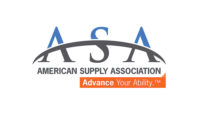The American Society of Plumbing Engineers is
opening for public comment the proposed ASPE Plumbing Engineering & Design
Technical Standard 15: Hot Water Temperature and Control. Public comments will
be accepted until noon CST on Dec. 30, 2011. The draft standard and public
comment form can be accessed ataspe.org/PublicReview.
The intent of ASPE 15 is to provide minimum requirements to regulate hot water
temperature and pressure disturbances within the piping system in a plumbing
installation to protect public health, safety and welfare. It is to be a
mandatory regulation applicable to all new and renovated plumbing
installations. This standard is not intended to apply to existing
installations.
“ASPE 15 will provide a central source for acceptable ranges of hot water
temperatures at the point of discharge and acceptable means of control to
remove confusion over acceptable delivery temperatures,” saidDavid
E. Dexter, FASPE, chair of ASPE’s Design Standards Committee.
“Establishing acceptable hot water delivery temperatures in a single document
decreases the potential risk of injury or harm to the end user.”
For more information about ASPE’s standards development process, visitaspe.org/Standardsor contactGretchen Pientaatgpienta@aspe.org.
Source: ASPE.
Public Comments Sought For Proposed Hot Water Temperature Control Standard
Looking for a reprint of this article?
From high-res PDFs to custom plaques, order your copy today!





